
 |
 |
 |
 |
 |
 |
 |
|
La Voix des Lieux
The Voice of the Places
(Vincent Delaveau)
How can we begin to recount all the information we learned in our visits guided by Vincent? Instead of retelling each visit in a play-by-play fashion, we have assembled some of the facts learned from each visit that really stood out for each of us.
1. Visite sur les berges de la Seine et l'île St. Louis (le 8 janvier)
- Once there were three islands in the Seine, but île des Vaches and île Notre Dame were joined to make a single island—île St. Louis.
- In the 18th century, the condition of the Seine was conducive to navigation only on 160 days of the year.
- The left and right banks were named based on the flow of the Seine.
- Pont Neuf was the first bridge built in Paris without houses on it. Before this, houses and hotels were built on the bridges and sometimes they crumbled and fell into the Seine.
- Every 100 years, the level of the Seine is expected to rise up to really high levels, effectively flooding Paris. The last time this happened was in 1910, so Paris is due for more high waters.
- During a flood, one of the best methods to protect individuals living close to the Seine was to build walls. The second best method was prayer.
- The area surrounding the cloister of Notre Dame was populated by aristocracy because all the clergy gave nearby houses to their families.
- Notre Dame was the first gothic church constructed in France and was constructed from "back to front". In other words, the square façade was actually the last thing to be built. Inside, one can see that the last couple columns to be constructed have a slightly different style than those near the rear of the cathedral.
- The large clock located on the Palais de Justice near the Seine was the first public and secular clock in Paris.
- Louis XV created the system of street nomenclature, where each street has its name engraved on the corner. (This has, of course, been replaced with the current system of modern green plaques.)
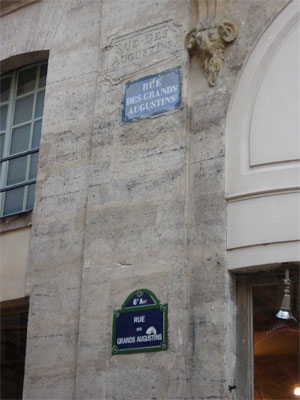
- L’Hôtel Dieu was established in the 7th century and supported by bishops. They accepted everyone: travelers, poor people, vagabonds, etc. However, it was not the most sanitary of places and often kept multiple sick people per bed. Disease spread very easily so if an epidemic spread to the streets, it would quickly contaminate the whole city.
- Also problematic for l'Hôtel Dieu was that patients were organized by their state of health and not the type of malady.
- Place Dauphine was established by Henri IV as a commercial center.
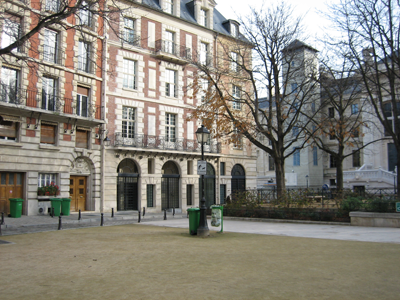
- The Place Dauphine was an inspiration for Molière’s comedies. Quacks selling fake medical potions and “wise men” roamed the square. In addition, the square was full of prostitutes, robbers, and sergeants recruiting soldiers for the Royal Army. Also, there were plenty of individuals selling chicken rotisseries.
2. Le Moyen Age et le Musée de Cluny (le 10 janvier)
- Parisians moved inside the walls of Paris at the end of the 3rd century to protect themselves from invaders.
- The Musée de Cluny houses the remains of the original statues of kings that once decorated the façade of Notre Dame. One can still see remnants of color on the faces of the kings, especially around the eyes and lips.
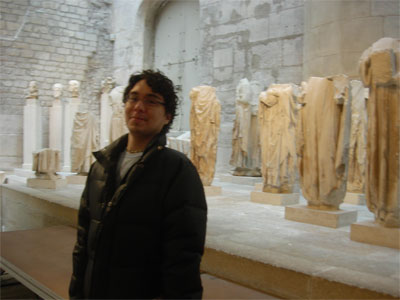

- Tapestries were re-cut every time the owner moved (which was often) to fit the walls. As a result, the tapestries now look mismatched next to each other because they are different sizes and sometimes figures and details were cropped strangely.
- A relic is either an article of clothing or a body part (corporal) of a saint. There are only two corporal relics of Christ believed to have existed: his foreskin and his umbilical cord.
- At the beginning of the university system, there were only three fields of study: law, medicine, and theology.
- La Sorbonne was not started as an educational institution, but as a boarding house for students.
3. Les Places Royales (le 12 janvier)
- Some of the reasons the Duke de la Feuillade built the Place des Victoires (it was actually not initiated by Louis XIV) were to gain friendship and admiration from the king and to promote aristocracy, since more bourgeoisie or “new money” were gaining favor.
- Covered passages through buildings were created to allow royalty and other important people to easily move from their homes to the Grands Boulevards and other sources of entertainment.
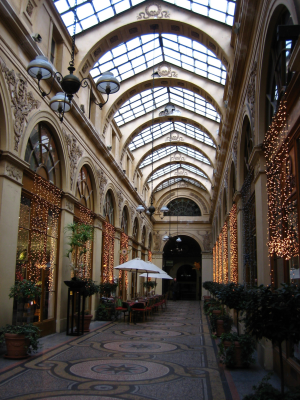
- At the Square Louvois, the largest theatre in Paris was constructed, but it was demolished after the Duke of Berry was assassinated there in 1820. Fortunately, his wife was pregnant at the time of his murder, so there was hope for the royal chain.
- At one time, Catherine de Medici had a palace where the Jardin de Tuileries is now located, but it burned down.
4. Le Parc Monceau et le Paris de Haussmann (le 14 janvier)
- Parc Monceau existed before the 19th century but was known as Folie de Chartres.
- Parc Monceau was redesigned under Napoléon III to include aspects of different countries and cultures, including Italian columns and an Egyptian pyramid.
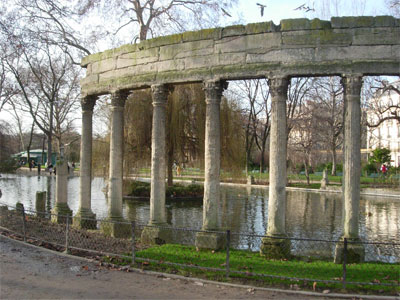
- The park was designed to be an English style garden for several reasons: a French style garden was meant for one owner and not the public. Also, they didn't want to have flowers (as in a French style garden) because people would pick them.
- Apartments in the Haussmann-ian style have two staircases: a principle one for residents and another one for servants.
- The Grands Boulevards were established for four main reasons:
- to increase commerce and reduce traffic
- to show off monuments
- to clear out disgusting and unclean neighborhoods
- to discourage revolutions among the public
5. De l'Hôtel de Ville jusqu'au Parc de Bercy (le 15 janvier)
- François I is represented by a salamander in French art.
- Henri II is represented by 3 crescents.
- Louis XIV was de-virginized (dépuceler) by Catherine de Beauvais. A sculpted head depicting her likeness (shown below) is found inside the Hôtel de Beauvais.

- At the Eglise St. Paul–St. Louis, the aristocratic residents of the “quartier” would send their servants early in the morning to guard their spots.
- The Place des Vosges was the site of many duels until Richelieu outlawed them, causing a scandal.
- The Opéra Bastille was created under François Mitterrand to make opera more accessible to the general public. Madame de Sévigné even had her own reserved seat at the opera.








